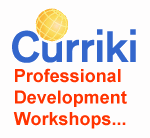 By Janet Pinto, Chief Academic Officer, Curriki
By Janet Pinto, Chief Academic Officer, Curriki
In June, I wrote a blog about STEAM, which is the incorporation of Arts education into STEM learning. I noted that scientific progress and excellent design and engineering require insight, creativity, collaboration, communication and thinking out of the box. An appreciation of the Arts fuels creative thinking and innovation. Furthermore, technology needs to be developed with the human user always in mind. The full blog can be found here – https://currikiblog.wordpress.com/tag/steam/
Here is another interesting blog on how STEAM ties into 21st century learning: http://goo.gl/Zk512. The author notes “Many scientists I’ve met integrate art into their work intentionally or unconsciously. Communicating scientific concepts and data requires creating visual and even sonic representations.”
Apple, the most valuable company in the world today, creates products that are as much about design principles for the user interface and about the product look and feel as they are about the internal technology. Design and technology are complementary and both necessary in developing everything from automobiles to cola bottles to electric guitars.
The goals of a STEAM-based approach are functional literacy and holistic learning. A good presentation on why STEAM can be found here: http://www.steamedu.com/WhySTEAMshortWeb.pdf
School arts programs can improve student performance. Large enhancements in reading scores have been seen in some trials through the DREAM program, which guides third- and fourth-grade teachers in incorporating arts into their lessons.
And below you can find links to a number of free, curated Arts and Language Arts resources on Curriki, and over 80 STEM resources as well!
https://currikiblog.wordpress.com/2012/10/12/free-language-arts-curriki-curated-resources/









The presentations that I’ve seen about expanding “STEM to STEAM” have included all sorts of language and visual arts topics that I would not feel capable or comfortable with as part of my thirty years of teaching physics, math, and electronics at the high school and technical college levels. In addition, the current content packed into a semester has more than doubled since I began my career, so there is not time nor resource to include any “arts” instruction, as such, into the courses.
I certainly agree that there are critical thinking, workplace relationships, and life skills that are important to the STEM curriculum, and I have implemented them as part of the learning process in the classroom. Yet the actual instruction of those techniques belongs to the “soft skills” departments providing instruction in the world language, English, fine arts, and social sciences.
The traditional STEM subjects are related by common modes of thought dealing with “the nature of science” and “empirical evidence”, which are guided by the rules of logic and mathematics. So a description of “STEM+”, rather than “STEAM”, might be more appropriate to linking the “external” natural sciences to the “internal” social arts.
Maybe the arts community needs to come up with its own acronym to balance the relative importance of each knowledge domain, rather than trying to merge into “STEM”. May I suggest something like “Communication, Social, and Cultural Arts” or “CSCA”. The common modes of thought in this realm involve “expressions” and “transactions”, which are guided by the “norms” of society. So we might agree on the equation: “STEM + CSCA = 21st Century Curriculum”. In any case, a new acronym and label is needed to replace “Arts and Humanities”, which sounds so medieval these days.
I do not mean to imply that a STEM curriculum has a priority over other parts of the student’s learning and experience. It’s just that STEM already has enough to do teaching the “hard skills”, that adding any more topics or lessons will dilute the effort and the results at the high school and college levels. Let’s clearly identify that both “arts” and “sciences” are essential parts of the total learning experience.